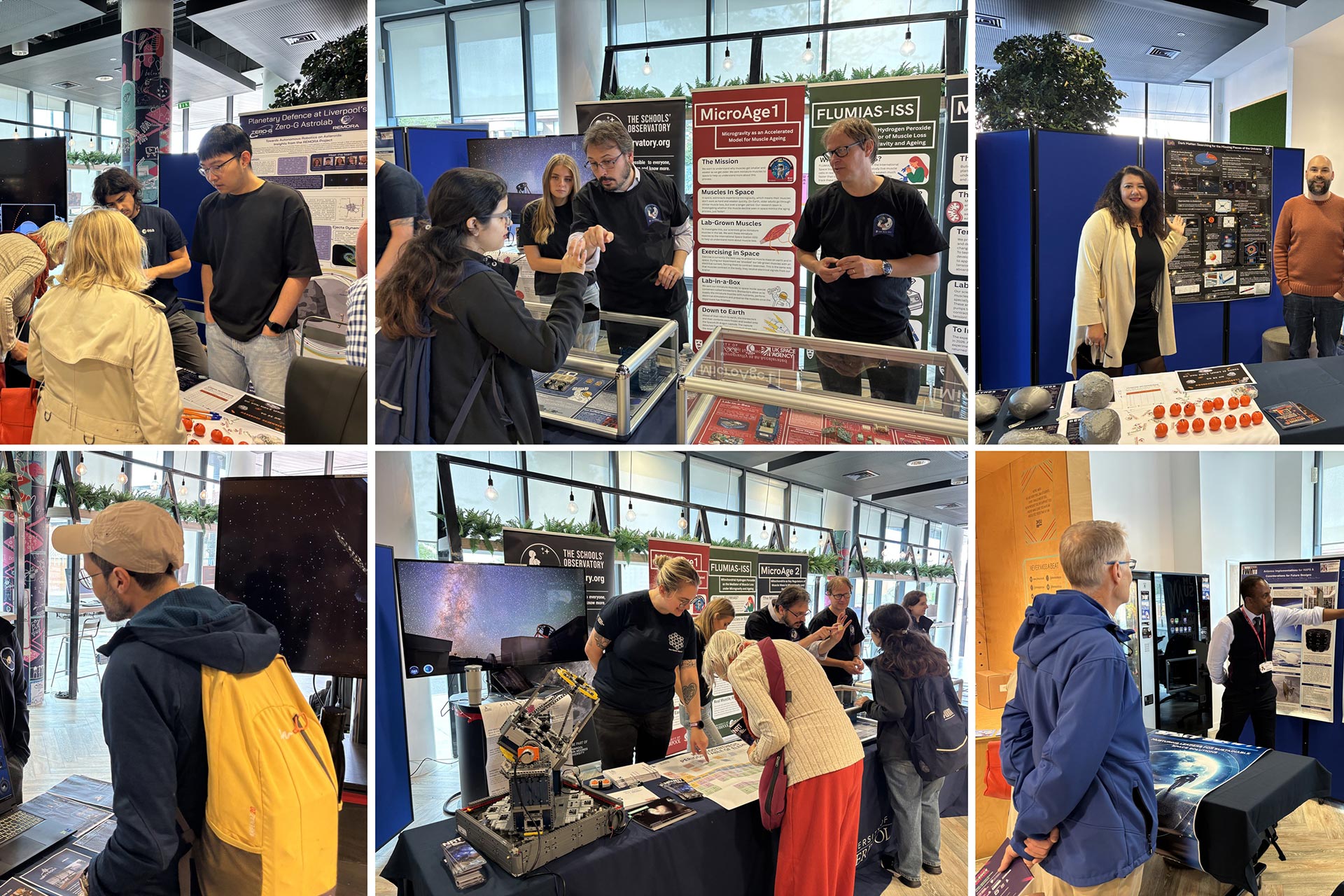
Can we prevent an asteroid from hitting the Earth? What happens to the muscles as we age? What is dark matter? These are some of the questions that participants in the British Science Festival had the opportunity to discuss with the very academics who lead the research into these topics.
Space scientists from the University of Liverpool, led by Stefania Soldini, teamed up with colleagues from John Moores Liverpool University, Liverpool Hope University, and the student-led Liverpool Association for Space Engineering Research (LASER) from the School of Engineering to create a series of interactive exhibitions demonstrating the ground-breaking research carried out in Liverpool on the ultimate frontier.
Xiaoyu Fu and Nicoló Stronati from the School of Engineering’s Zero-G AstroLab talked about their work on guidance, navigation, and control systems for satellites participating in planetary defence missions. These missions aim at gathering information about asteroids in near Earth orbit and even prevent a catastrophic collision with the Earth if any of them was found to pose a threat to the planet.
The MicroAge team, led by Kai Hoettges, presented their pioneering experiment, offering attendees a unique insight into the science of muscle ageing. The team showed how microgravity aboard the International Space Station can be used as a platform to accelerate the ageing process in engineered muscle tissue, enabling researchers to investigate the mechanisms of muscle deterioration more rapidly than on Earth. This research is particularly relevant to the development of interventions for the preservation of muscle mass in older populations. Visitors also had the rare opportunity to view genuine space-flown flight hardware, including the miniaturised bioreactors used to study muscle biology in orbit.
Monica D’Onofrio and John Anders from the Department of Physics showcased their ambitious programme to uncover the mysteries of dark matter and dark energy. One of the highlights was the interesting discussions of the complementary ways that we can investigate dark matter here on Earth, from direct and indirect detection to the production of dark matter in particle colliders. Andy Carroll discussed with visitors the micro-gravity environment of space is an ideal place to search for gravitational waves and ultralight dark matter with atom interferometry.
The Liverpool Society for Space Engineering and Research, represented by Caitlin Murray, displayed materials from their past competition events, from mars rovers to rockets and beyond. The stall allowed visitors the chance to read newsletters from their busy year, as well as to watch selected clips from this summer's National Rocketry Championship, in particular the LASER rocket's launch.
The Liverpool John Moores University group, led by Helen Jermak, displayed a stunning mural of the Liverpool Telescope – the world’s largest robotic telescope – which was painted by Paul Curtis on campus at LJMU. The mural is currently installed at College Lane, Liverpool ONE.
Space research at Liverpool Hope University was represented by Ogbonnaya Anicho, who talked about his work on robotics and autonomous connectivity systems for satellite networks.